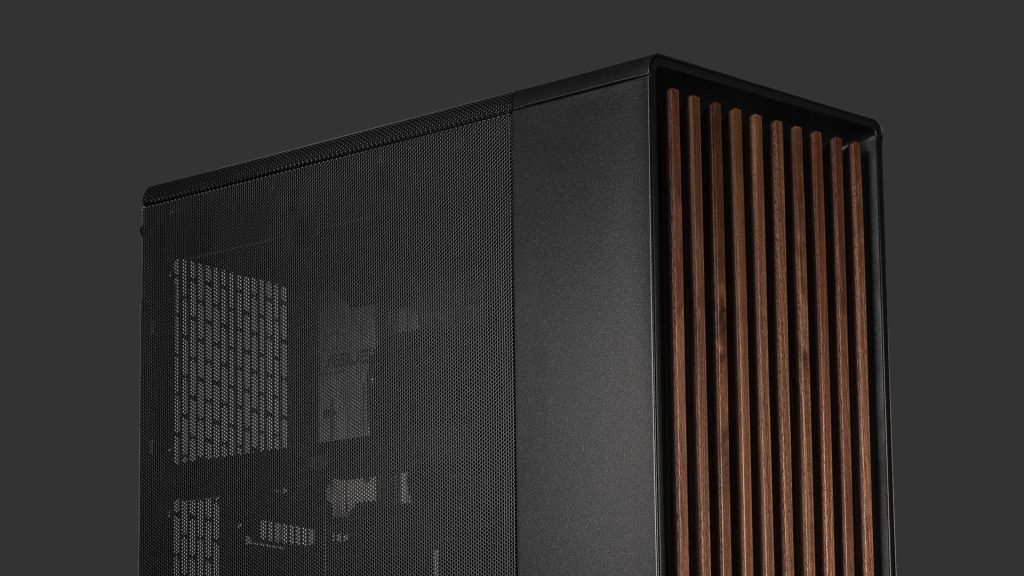Between these two attractive desktops, Scan has most bases covered in AEC and product development, from CAD/BIM and visualisation to simulation, reality modelling and beyond, writes Greg Corke
Specialist workstation manufacturers like Scan often stand out from the major OEMs, as they offer the very latest desktop processors. The Scan 3XS GWP-A1-C24 features the new “Arrow Lake” Intel Core Ultra 200S Series (with the C in the model name standing for Core) while the Scan 3XS GWP-A1-R32 offers the ‘Zen 5’ AMD Ryzen 9000 Series (R for Ryzen). In contrast, Dell, HP, and Lenovo currently rely on older 14th Gen Intel Core processors, while their AMD options are mostly limited to the high-end Ryzen Threadripper Pro 7000 Series.
From the exterior, both Scan workstations share the same sleek design, housed in the Fractal North Charcoal Mesh case with dark walnut wood strips on the front. While wood accents in PC cases can sometimes feel contrived, this ATX Mid-Tower strikes an excellent balance between form and function.
This article is part of AEC Magazine’s 2025 Workstation Special report
Its elegant, minimalist aesthetic enhances the overall visual appeal without compromising airflow. Behind the wooden façade, an integrated mesh ensures efficient ventilation, with air drawn in through the front and expelled through the rear and top. Adding to its refined look, the case has understated brass buttons and ports on the top, including two USB 3.0 Type-A, one USB 3.1 Gen2 Type-C, as well as power button, mic, and HD audio ports.
The downside of the chassis is that it’s relatively large, measuring 215 x 469 x 447mm (W x H x D). However, this spacious design makes accessing internal components incredibly easy, a convenience further enhanced by Scan’s excellent trademark cable management.
Both Intel and AMD machines share several Corsair branded components, including 64 GB (2 x 32GB) of Corsair Vengeance DDR5 5600 memory, a 2TB Corsair MP700 Pro SSD, a Corsair Nautilus 360 cooler, and Corsair RM750e PSU.
The 2TB NVMe SSD delivers blazingly-fast read and write speeds combined with solid endurance. In CrystalDiskMark it delivered 12,390 MB/sec sequential read and 11,723 MB/sec sequential. Its endurance makes it well suited for intensive read / write workflows, such as reality modelling. Corsair backs this up with a five-year warranty or a rated lifespan of 1,400 total terabytes written (TBW), whichever comes first.
The all-in-one (AIO) liquid CPU cooler features a 360mm radiator, bolted on to the top of the chassis. Cooled by three low-duty RS120 fans both machines run cool, and remain very quiet, even when rendering for hours.
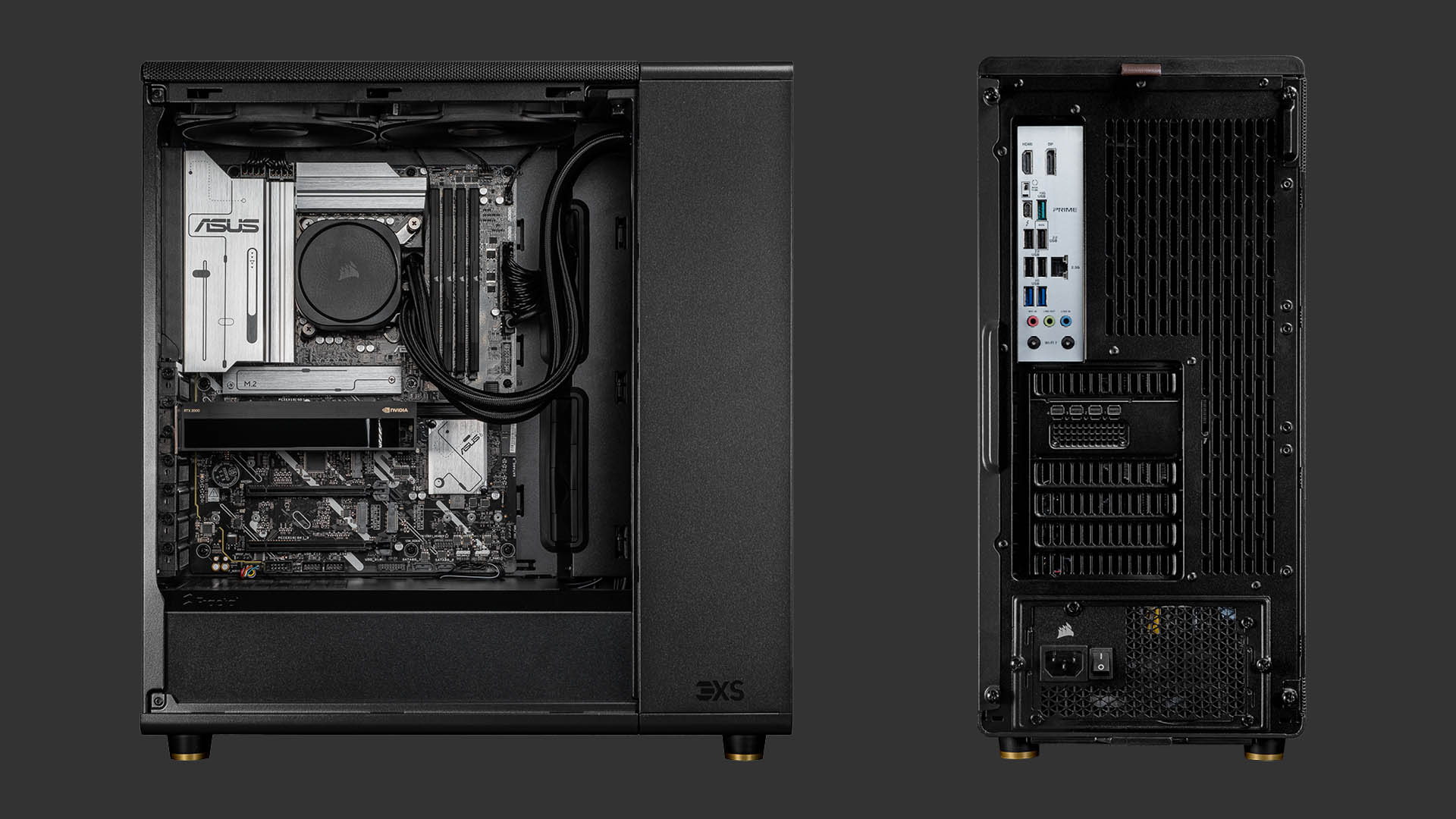
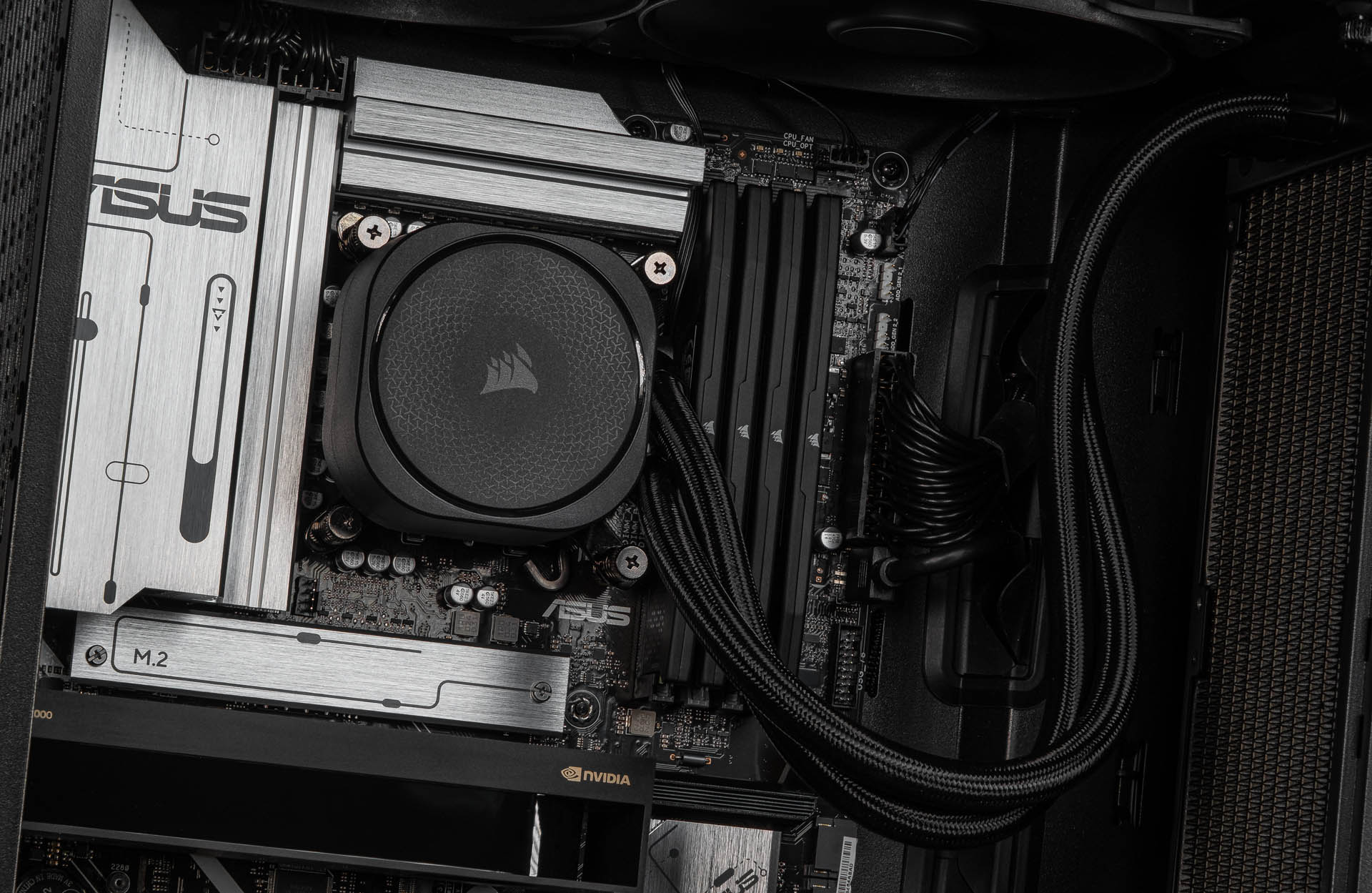
Intel Core Ultra 200S Series
Our Intel-based Scan 3XS GWP-A1-C24 workstation was equipped with a top-end Intel Core Ultra 9 285K CPU and an entry level workstation GPU, the Nvidia RTX 2000 Ada Generation. This hardware pairing is well-suited to CAD, BIM, and entry-level viz workflows, as well as CPUintensive tasks like point cloud processing, photogrammetry, and simulation.
The Nvidia RTX 2000 Ada Generation is a compact, low-profile, dual-slot GPU featuring four mini DisplayPort connectors. With a conservative power rating of 70W, it gets all its power directly from the Asus Prime Z890-P motherboard’s PCIe slot. Despite its modest power requirements, it delivered impressive graphics performance in CAD and BIM, easily handling all our 3D modelling tests in Solidworks and Revit. 16 GB of onboard memory allows it to work with fairly large visualisation datasets as well.
In real-time visualisation software, don’t expect silky smooth navigation with large models at high resolutions. However, 3D performance is still acceptable. In Chaos Enscape, for example, we got 14 frames per second (FPS) at 4K with our demanding school project test scene.
Outputting ray trace renders in KeyShot, V-Ray and Twinmotion was noticeably slower compared to more powerful Nvidia RTX GPUs. That said, it’s still a viable solution if you’re willing to wait. In Twinmotion, for example it cranked out five 4K path traced renders in 1,100 seconds, just under twice as long as it took the Nvidia RTX 4500 Ada Generation in Scan’s Ryzen-based workstation.
In CPU workflows, the Intel Core Ultra 9 285K CPU delivered mixed results. While it outperformed the AMD Ryzen 9 9950X in a few specific workflows (as detailed in our in-depth article here), the performance gains over 14th Gen Intel Core processors, which launched in Q4 2023, were relatively minor. In fact, in some workflows, it even lagged behind Intel’s previous generation flagship mainstream CPU, the Intel Core i9-14900K.
One advantage that Scan’s Intel workstation holds over its AMD counterpart is in memory performance. Both machines were configured with 64 GB of DDR5 RAM running at 5,600 MT/s. However, when memory is increased to 128 GB, filling all four DIMM slots, the memory clock speed must be reduced to keep everything stable. On the Intel system, it only drops a little, down to 4,800 MT/s, but on the AMD system, it’s much more significant, falling to 3,600 MT/s. This reduction can have a notable impact on performance in memory intensive tasks like simulation and reality modelling, giving the Intel system an edge when working with large datasets in select workflows.
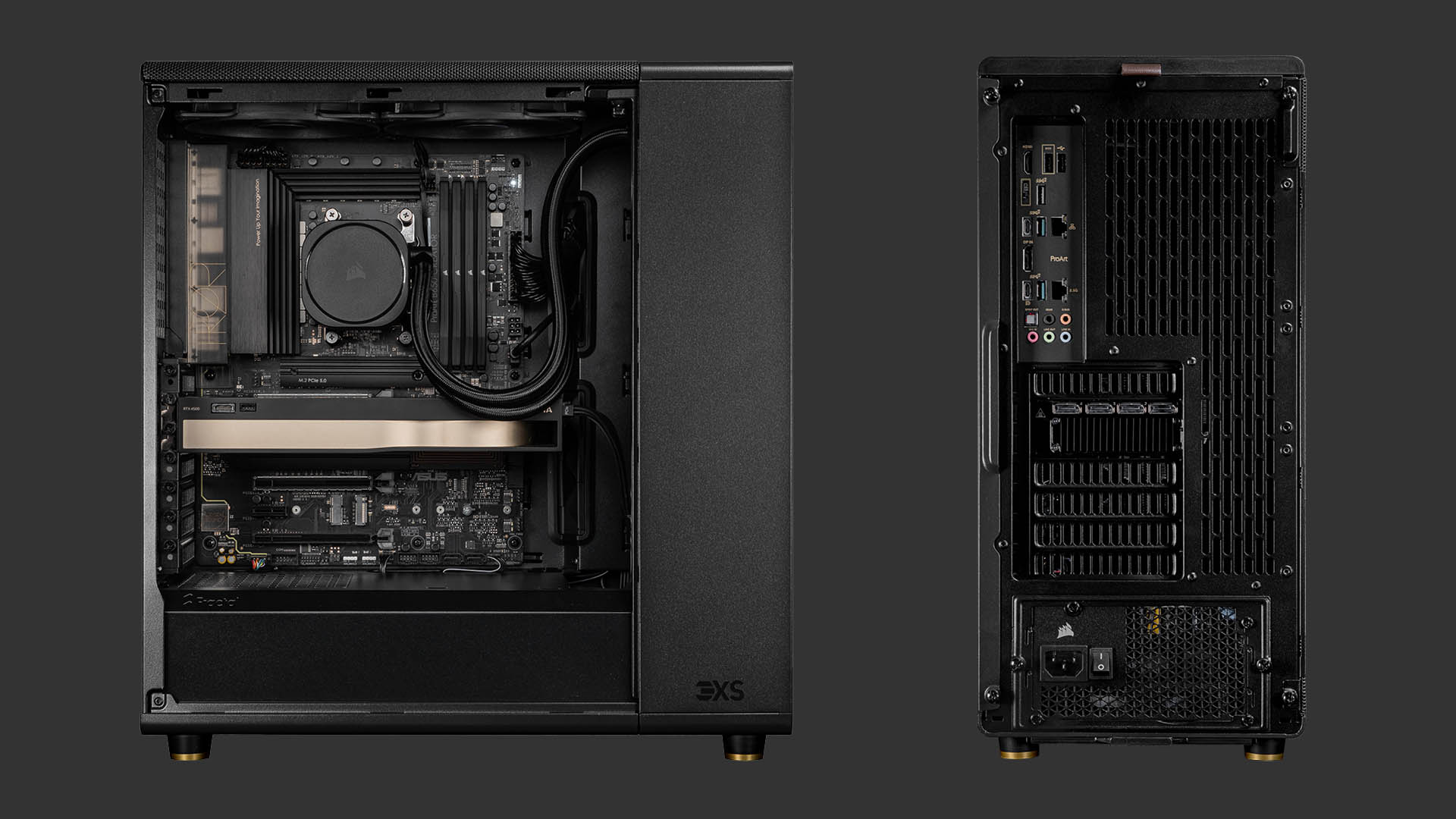
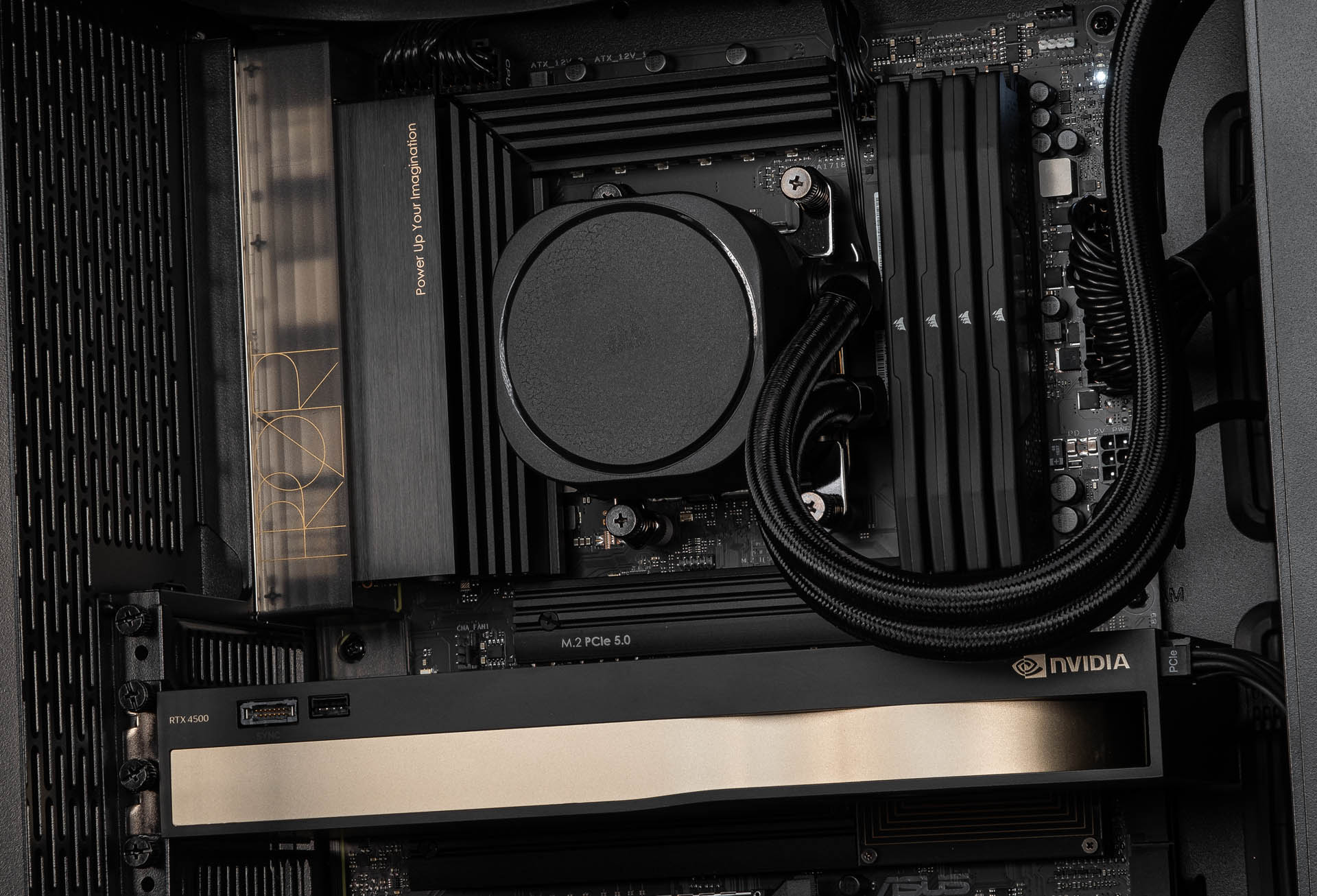
AMD Ryzen 9000 Series
Our AMD-based Scan 3XS GWPA1-R32 workstation is set up more for visualisation, with an Nvidia RTX 4500 Ada Generation GPU (24 GB) paired with the top-end AMD Ryzen 9 9950X CPU.
The full length double height Nvidia GPU is rated at 210W, so must draw some of its power directly from the 750W power supply unit (PSU). It comes with four Display Port connectors.
The RTX 4500 Ada marks a big step up from the RTX 2000 Ada. In real-time viz software Enscape we got double the frame rates at 4K resolution (28.70 FPS), and more than double the performance in most of our ray trace rendering tests. With 50% more on-board memory, you also get more headroom for larger viz datasets.
The CPU performance of the system was equally impressive. While the previous generation Ryzen 7000 Series enjoyed a lead over its Intel equivalent in multi-threaded ray tracing, it lagged behind in single threaded workflows. But with the Ryzen 9000 Series that’s no longer the case. AMD has significantly improved single threaded performance gen-on-gen, while Intel’s performance has stagnated a little. It means AMD is now sometimes the preferred option in a wider variety of workflows.
But the Scan 3XS GWP-A1-R32 is not without fault. In select reality modelling workflows, it was significantly slower than its Intel counterpart. We expect this is down to its dual chiplet (CCD) design, something we explore in more detail in this article.
Also, as mentioned earlier, those that need more system memory will have to accept significantly slower memory speeds on AMD than with Intel. This can impact performance dramatically. When aligning images in Capturing Reality, for instance, going from 64 GB (5,600 MT/s) to 128 (3,600 MT/s) on the AMD workstation, saw computation times increase by as much as 64%. And in simulation software, OpenFoam CFD, performance dropped by 31%.
Conclusion
Both Scan 3XS workstations are impressive desktops, offering excellent performance housed in aesthetically pleasing chassis. The choice between Intel and AMD depends on the specific demands of your workflows.
In terms of CAD and BIM, performance is similar across both platforms, as shown in our benchmark charts. For visualisation, AMD holds a slight edge, but this may not be a deciding factor if your visualisation tasks rely more on GPU computation rather than CPU computation.
When it comes to reality modelling, Intel may not always have the lead, but it offers more consistent performance across various tasks. Additionally, Intel’s support for faster memory at larger capacities could make a significant difference. With 128 GB, Intel can achieve noticeably faster memory speeds, which translates into potential performance gains in certain workflows.
Ultimately, both machines are fully customisable, allowing you to select the components that best match your specific needs. Whether you prioritise raw processing power, memory speed, or GPU performance, Scan offers flexibility to tailor the workstation to your requirements.
Specifications – Scan 3XS GWP-A1-C24 (Intel-based)
- Intel Core Ultra 9 285K processor (3.7 GHz, 5.7 GHz boost) (24 cores – 8 P-cores + 16 E-cores)
- Nvidia RTX 2000 Ada Generation GPU (16 GB)
- 64 GB (2 x 32 GB) Corsair Vengeance DDR5 5,600 memory
- 2TB Corsair MP700 Pro SSD
- Asus Prime Z890-P motherboard
- Corsair Nautilus 360 cooler
- Corsair RM750e Power Supply Unit
- Fractal North Charcoal Mesh case (215 x 469 x 447mm)
- Microsoft Windows 11 Pro 64-bit
- 3 Years warranty –1st Year Onsite, 2nd and 3rd Year RTB (Parts and Labour)
- £2,350 (Ex VAT)
- scan.co.uk/3xs
Specifications – Scan 3XS GWP-A1-R32 (AMD-based)
- AMD Ryzen 9 9950X processor (4.3 GHz, 5.7 GHz boost) (16 cores, 32 threads)
- Nvidia RTX 4500 Ada Generation GPU (24 GB)
- 64 GB (2 x 32 GB) Corsair Vengeance DDR5 5,600 memory
- 2TB Corsair MP700 Pro SSD
- ASUS Pro Art B650 Creator motherboard
- Corsair Nautilus 360 cooler
- Corsair RM750e Power Supply Unit
- Fractal North Charcoal Mesh case (215 x 469 x 447mm)
- Microsoft Windows 11 Pro 64-bit
- 3 Years warranty – 1st Year Onsite, 2nd and 3rd Year RTB (Parts and Labour)
- £3,583 (Ex VAT)
- scan.co.uk/3xs
This article is part of AEC Magazine’s 2025 Workstation Special report
- Features
- AMD Ryzen AI Max Pro: the integrated GPU comes of age
- AMD Ryzen 9000 vs Intel Core Ultra 200S
- Workstations for arch viz
- The AI enigma – challenges for workstations
- Nvidia RTX GPUs for Stable Diffusion
- Z by HP Boost: GPUs on demand
- Workstations for reality modelling
Reviews
- HP ZBook Firefly 14 G11 A mobile workstation
- Lenovo ThinkPad P14s (AMD) mobile workstation
- Scan 3XS GWP-A1-C24 and GWP-A1-R32 desktop workstations
- Boxx Apexx A3 desktop workstation
- Armari Magnetar MM16R9 desktop workstation
- Comino Grando workstation RM
News
- Reshuffle spells end for Dell Precision workstation brand
- Lenovo powers IMSCAD workstation as a service (WaaS)
- Nvidia unveils ‘Blackwell’ RTX GPUs
- HP to launch 18-inch mobile workstation
- Nvidia reveals AI workstation
- HP bets big on AMD Ryzen AI Max PRO processor
- Intel Core Ultra 200HX and 200H processors launch
- AMD Ryzen AI Max PRO ‘Strix Halo’ processor launches

